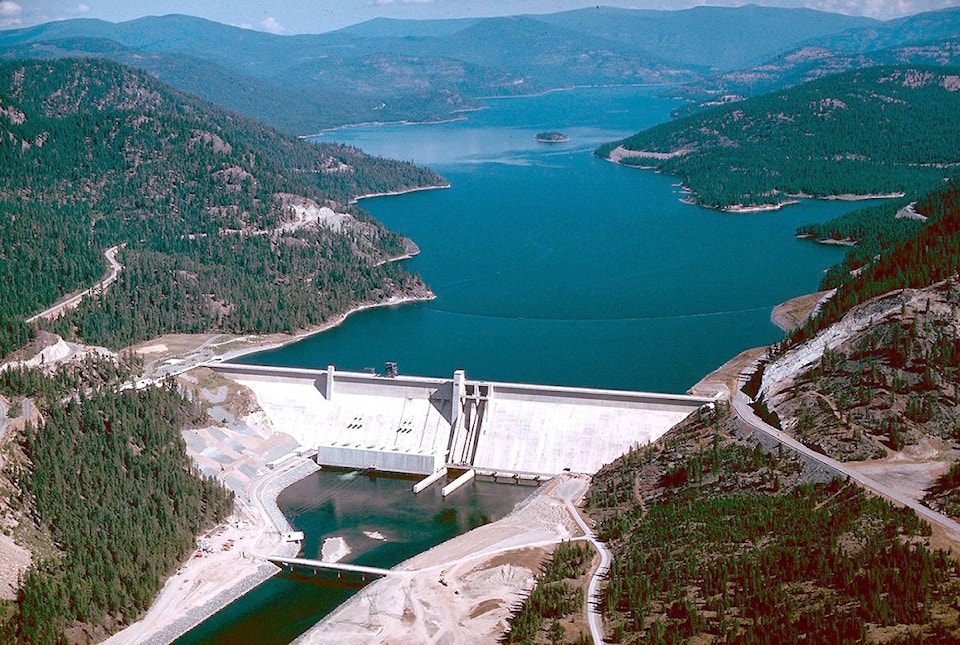In this series of educational articles, the Advance will explore connections to our water with interesting and historical facts.
Signed in 1961 and ratified in 1964, the Columbia River Treaty is a transboundary water management agreement between Canada and the United States. The treaty optimizes both flood management and power generation through co-ordinated operations of dams, rivers, and reservoirs on both sides of the border.
What led to the treaty?
In 1948, before there were any dams along the Columbia River, there was a disastrous flood that devastated the former city of Vanport, Oregon. The floodwaters completely destroyed the infrastructure and killed 15 people, when the 200-foot-long railroad berm holding back the river collapsed.
As well as the growing demand for power in the Pacific Northwest on both sides of the border, the impetus for the Columbia River Treaty was the flood and the growing need for electricity.
The four dams
To vastly reduce flood risk and provide hydro-power efficiency, Canada agreed to build three dams in B.C. – Duncan, Hugh L. Keenleyside, and Mica. The U.S. was to build a fourth in Montana - the Libby Dam.
Under the terms, Canada was required to provide 19.12 km³ (15.5 million acre-feet) of usable reservoir storage behind the three dams.
The U.S. prepaid $64 million (in one lump sum) to Canada for 60 years of assured flood control operations.
From the water flow management of the B.C. storage reservoirs, additional hydro-electricity is generated at 11 power plants on the Columbia River in the U.S. These downstream power benefits are equally shared between both countries on an ongoing basis.
Every year, the U.S. transfers approximately $120 million worth of electricity to B.C. for the water storage and management rights.
As a shared benefit, the U.S. transfers half of the additional potential hydroelectric power to B.C. as a result of treaty operations.
Controversial impacts
By today’s standards, the consultation with the First Nations and Columbia River Basin residents in the 1960s was inadequate or non-existent.
There are some crucial issues that were glossed over when the Columbia River Treaty was first negotiated.
The filling of both the Arrow Lakes and Koocanusa (behind Libby Dam) reservoirs flooded 110,000 hectares (270,000 acres) of valley land.
More than two thousand residents were displaced, with BC Hydro providing financial compensation for their homes and relocation. However, this was especially devastating for First Nations communities as their sacred sites were lost forever. For instance, the Sinixt people, who had occupied the Columbia River Valley for thousands of years, lost their sacred burial grounds.
Manipulation of lake levels in Canada have also had negative effects on fish and wildlife. The introduction of the dams interrupted the delicate balance of aquatic habitats by causing water temperature changes, displacing nutrient-rich sediments, destroying spawning grounds, and creating obstacles in fish migration. Reportedly, some fish fry are also killed while trying to swim through the dam turbines every season.
Since the 1930s, salmon have been blocked from the Columbia River system by the Grand Coulee Dam. As to what degree the possible rehabilitation of salmon will enter into the negotiations is unknown. Some Indigenous peoples, such as the Syilx in the Okanagan, also have a cultural relationship with salmon and would like to see their populations restored.
Renegotiations of the treaty
The Columbia River Treaty has no end date, but either country could choose to terminate after 60 years (in September 2024 or onwards) as long as 10 years notice is given.
Starting in 2012, government agencies in both Canada and the U.S. began conducting a review of the treaty to determine its future and analyze its economic, environmental, social, financial, legal and hydrological impacts.
The flood control agreement ends in 2024, which means the U.S. will either have to renegotiate or rely on their own flood control reservoirs.
Renegotiations began in 2018, but this complex matter could still take years to come.
Stakeholders involved in the consultations include First Nations, Columbia River Basin residents, local government officials, and other provincial agencies.
- Information courtesy of Government of British Columbia website
- With files from Bill Metcalfe and Will Johnson
READ MORE FROM THIS SERIES: Our Precious Water: The Columbia River Drainage Basin
